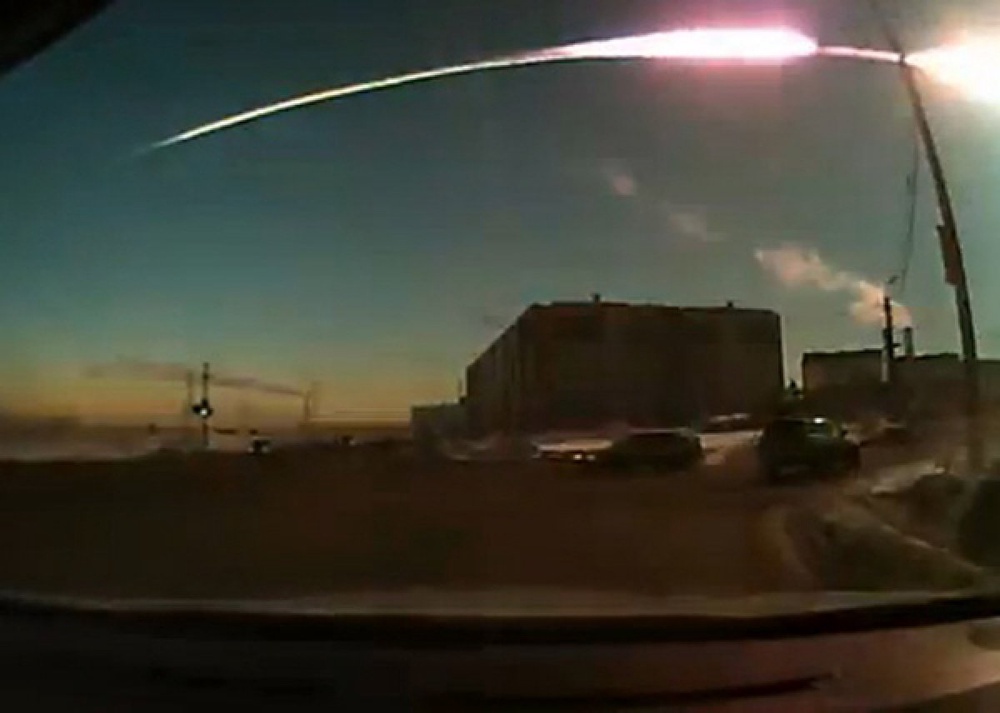
The meteor that injured over 1,500 people when it exploded and showered debris over Russia in February may have had a close shave with the Sun earlier, AFP reports citing researchers. A study of its composition showed the space rock had undergone "intensive melting" before entering Earth's atmosphere and streaking over the central Russia's Chelyabinsk region in a blinding fireball, they said in a statement. This "almost certainly" points to a near-miss with the Sun, or a collision with another body in the solar system -- possibly a planet or asteroid, said study co-author Victor Sharygin from the Russian Academy of Sciences' Institute of Geology and Mineralogy. The findings were presented at the Goldschmidt geochemistry conference in Florence, Italy. The meteor is estimated to have been 17 metres (56 feet) wide before exploding with the equivalent force of 30 times that of the nuclear bomb dropped on Hiroshima during World War II. Its shockwave blew out windows and damaged buildings across five Russian regions. The meteor's fragments lie scattered over a large area around Chelyabinsk -- the largest piece is believed to lie at the bottom of Chebarkul Lake from where scientists are trying to raise it.





The meteor that injured over 1,500 people when it exploded and showered debris over Russia in February may have had a close shave with the Sun earlier, AFP reports citing researchers.
A study of its composition showed the space rock had undergone "intensive melting" before entering Earth's atmosphere and streaking over the central Russia's Chelyabinsk region in a blinding fireball, they said in a statement.
This "almost certainly" points to a near-miss with the Sun, or a collision with another body in the solar system -- possibly a planet or asteroid, said study co-author Victor Sharygin from the Russian Academy of Sciences' Institute of Geology and Mineralogy.
The findings were presented at the Goldschmidt geochemistry conference in Florence, Italy.
The meteor is estimated to have been 17 metres (56 feet) wide before exploding with the equivalent force of 30 times that of the nuclear bomb dropped on Hiroshima during World War II.
Its shockwave blew out windows and damaged buildings across five Russian regions.
The meteor's fragments lie scattered over a large area around Chelyabinsk -- the largest piece is believed to lie at the bottom of Chebarkul Lake from where scientists are trying to raise it.


 +7 (777) 001 44 99
+7 (777) 001 44 99















































